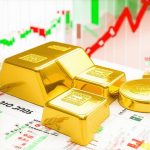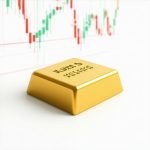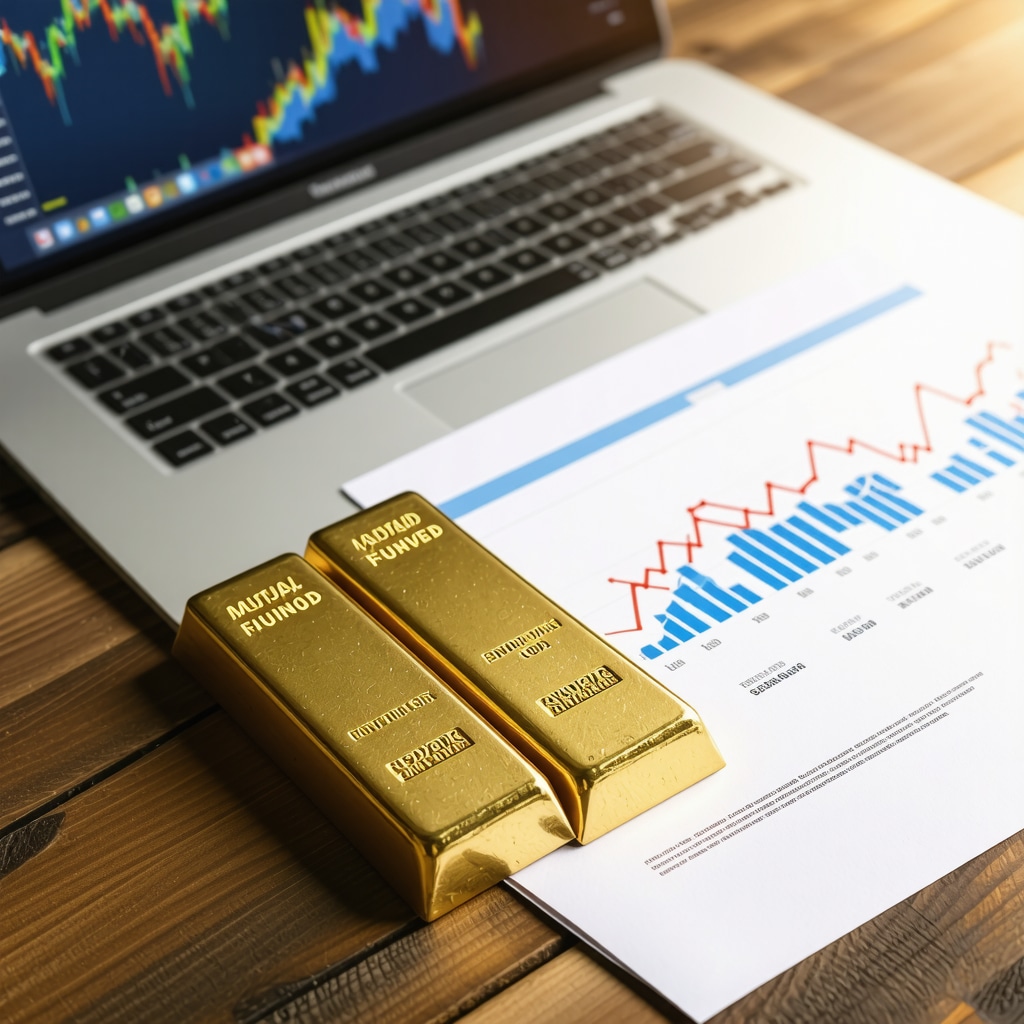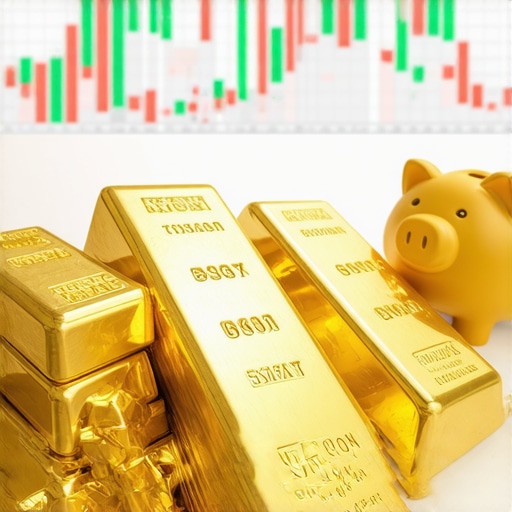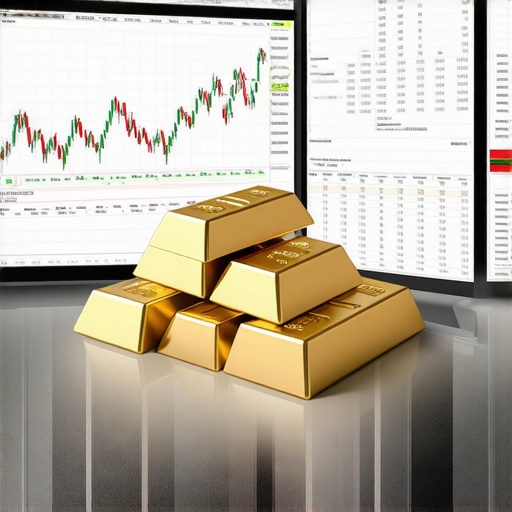Unlocking the Potential of Gold Investments: ETFs vs. Mutual Funds
In the quest for portfolio growth, gold remains a timeless asset that both novice and seasoned investors consider essential for diversification and wealth preservation. However, the decision between investing in gold ETFs (Exchange-Traded Funds) and gold mutual funds often puzzles investors seeking optimal returns and manageable risk. This expert analysis delves into the nuanced differences between these two investment vehicles, offering practical insights to empower your portfolio strategy.
The Investment Dynamics: How Gold ETFs and Mutual Funds Shape Your Growth
Gold ETFs represent a basket of gold assets that trade on stock exchanges much like individual stocks. They offer liquidity, transparency, and typically lower expense ratios compared to mutual funds. Conversely, gold mutual funds invest in a diversified portfolio of gold mining companies or physical gold assets, managed actively or passively by professional fund managers. This fundamental distinction impacts portfolio growth through variations in management style, fees, and exposure to gold price fluctuations.
What Are the Core Advantages and Risks of Gold ETFs Compared to Mutual Funds?
Gold ETFs excel in offering near-instant liquidity and cost efficiency, making them attractive for tactical traders or investors who prioritize flexibility. For example, an investor seeking quick market entry or exit can benefit from ETFs’ real-time pricing. However, ETFs might suffer from tracking errors relative to the spot gold price and are subject to market volatility akin to equities.
On the other hand, gold mutual funds provide exposure to mining equities, which introduces operational risks such as geopolitical factors, mining productivity, and corporate governance. Their active management aims to exploit market inefficiencies and growth opportunities but often comes with higher expense ratios that can erode net returns over time. For long-term growth, mutual funds might outperform in bullish gold markets due to leverage on mining companies’ profitability.
Strategic Portfolio Integration: Tailoring Gold Investments to Your Financial Goals
Incorporating gold ETFs or mutual funds requires aligning them with your investment horizon, risk tolerance, and diversification objectives. ETFs, with their lower costs and ease of trading, suit investors favoring passive strategies or those wishing to hedge against short-term market volatility. Mutual funds may appeal to investors seeking active management and exposure to the broader gold ecosystem beyond physical bullion.
For instance, a portfolio aiming for steady growth with moderate risk might allocate a portion to gold mutual funds known for robust management teams and strong historical performance. Meanwhile, a more conservative investor looking to safeguard wealth amid economic uncertainty might prefer gold ETFs for their direct correlation to gold prices and simpler cost structures.
Leveraging Authoritative Insights and Resources for Informed Decisions
According to the World Gold Council, gold’s role as a strategic asset remains pivotal in diversified portfolios, especially in times of inflation and geopolitical instability (Gold Investment Fundamentals). Understanding the underlying factors influencing gold prices and the structural differences between ETFs and mutual funds enables investors to tailor their strategies effectively.
For a deeper dive into choosing the right gold investment vehicle tailored to your needs, explore our detailed comparison at Comparing Gold Mutual Funds and ETFs: Which Is Right for You?
Engage with the Community: Share Your Experience and Questions
Have you invested in gold ETFs or mutual funds for portfolio growth? Share your experiences or questions in the comments below to join an insightful discussion with fellow investors navigating these choices.
Personal Reflections on Choosing Between Gold ETFs and Mutual Funds
Reflecting on my own journey with gold investments, I often found myself weighing the benefits of ETFs against mutual funds. Early on, I leaned towards gold ETFs because of their liquidity and straightforward structure. Being able to buy or sell shares instantly during market hours gave me a sense of control, especially in volatile periods. Yet, as I grew more comfortable and started exploring long-term growth, I noticed the potential advantages of gold mutual funds, especially those focused on mining companies.
What resonated with me was how actively managed mutual funds could capitalize on market inefficiencies and specific sector opportunities, which isn’t as accessible through ETFs. However, this comes with the trade-off of higher fees and the need to trust fund managers’ decisions. It became clear that a combination of both, tailored to my financial goals and risk tolerance, served me best.
How Can Investors Balance Flexibility and Growth in Their Gold Investments?
This question often pops up in discussions I have with fellow investors. Balancing the immediate flexibility of gold ETFs with the potentially higher returns of mutual funds requires a clear understanding of your portfolio’s role and your appetite for risk. For short-term tactical moves or hedging against economic uncertainty, ETFs usually fit the bill due to their cost efficiency and ease of trading. Meanwhile, if you’re aiming for growth and can weather the inherent volatility of the mining sector, mutual funds may offer richer rewards over time.
One practical approach I adopted was to allocate a core portion of my portfolio to ETFs for stability and liquidity, complemented by a smaller allocation to mutual funds to capture growth potential. This blend provided a balanced exposure without overcommitting to either side.
Insights from Industry Experts: What Does the Data Say?
Delving into research by the World Gold Council, it’s clear that gold’s strategic value in diversified portfolios remains strong, particularly as a hedge against inflation and geopolitical risks (Gold Investment Fundamentals). This aligns with my personal experience, especially during times when traditional assets faltered, and gold-based investments provided a stabilizing effect.
Moreover, industry data suggests that while ETFs often track gold prices closely, mutual funds’ performance is more tied to operational factors within mining companies, adding a layer of complexity but also opportunity. If you want to explore these nuances further, I recommend checking out our comprehensive guide on Comparing Gold Mutual Funds and ETFs: Which Is Right for You? where the distinctions are broken down thoughtfully.
Encouraging You to Share and Learn Together
Have you found a preferred approach between gold ETFs and mutual funds in your investment journey? What factors influenced your decision? I invite you to share your stories, questions, or strategies in the comments below. Engaging with a community of investors opens doors to fresh perspectives and collective wisdom, helping all of us make smarter, more confident decisions with our portfolios.
Decoding the Impact of Macroeconomic Trends on Gold ETF and Mutual Fund Performance
Investing in gold ETFs and mutual funds is not merely a static choice; it requires an ongoing assessment of macroeconomic variables that influence gold prices and mining sector dynamics. Inflation rates, interest rate adjustments, currency fluctuations, and geopolitical developments all play pivotal roles in shaping returns from these instruments. For example, rising inflation often elevates gold’s appeal as a hedge, thereby boosting ETF valuations closely tied to spot gold prices. Conversely, mutual funds investing in mining equities may experience amplified volatility due to operational disruptions or regulatory changes in mining jurisdictions.
Understanding these macro drivers enhances investors’ ability to time entries and exits or adjust portfolio allocations dynamically. This necessitates integrating economic data analysis with fund-specific insights to create a robust, responsive investment strategy.
Unlocking Alpha: Leveraging Active Management in Gold Mutual Funds for Superior Returns
While passive exposure through ETFs offers cost advantages, active management in gold mutual funds can unlock alpha by exploiting market inefficiencies and sector-specific insights. Skilled fund managers employ rigorous fundamental analysis to evaluate mining companies’ operational efficiency, exploration success, and geopolitical risk mitigation strategies. This active approach can capture upside potential missed by ETFs that simply track the gold price.
However, this alpha comes at the cost of higher expense ratios and the risk of underperformance if managerial decisions falter. Consequently, discerning investors should scrutinize fund managers’ track records, investment philosophies, and risk management frameworks before committing capital.
How Should Investors Evaluate the Trade-offs Between Cost and Potential Outperformance in Gold Mutual Funds?
This nuanced question highlights the critical balance between expense ratios and return potential. A lower-cost ETF can preserve capital during sideways markets, but may lag in bullish phases where selective mining stocks outperform. Evaluating this trade-off involves analyzing historical alpha generation, volatility patterns, and fee structures. Tools like the Sharpe ratio and Information ratio can provide quantitative measures of risk-adjusted performance, while qualitative assessments of management expertise add valuable context.
For an authoritative framework on fund evaluation, consider resources from the Chartered Financial Analyst (CFA) Institute, which emphasize comprehensive due diligence beyond mere cost metrics (Fundamentals of Fund Analysis).
Advanced Risk Mitigation Techniques: Diversifying Within Gold Investments
Beyond the ETF vs. mutual fund dichotomy, investors can further optimize risk by diversifying across different types of gold-related assets. This includes combining physical bullion, gold futures, ETFs, and mutual funds focused on various mining sub-sectors such as explorers, producers, and royalty companies. Each asset class carries unique risk-return profiles and correlations that, when properly balanced, can smooth portfolio volatility and enhance returns.
Implementing such a multi-asset gold strategy requires sophisticated portfolio construction techniques, including correlation analysis and scenario stress testing to anticipate performance under diverse market conditions.
Emerging Trends: The Rise of ESG-Compliant Gold Funds
Environmental, Social, and Governance (ESG) criteria are increasingly influencing gold investment choices. ESG-compliant gold funds focus on mining companies with responsible environmental practices, ethical labor standards, and transparent governance. This trend responds to growing investor demand for sustainable investing and has implications for risk assessment and long-term performance.
ESG integration may reduce exposure to regulatory fines and reputational risks, potentially enhancing resilience. However, it also narrows the investment universe, which might impact diversification and returns. Understanding the methodologies behind ESG scoring and fund selection is vital for investors prioritizing sustainability alongside financial goals.
Call to Action: Deepen Your Gold Investment Expertise
Gold investing is multifaceted, blending macroeconomic insight, fund analysis, risk management, and emerging thematic trends. To refine your strategy further, explore our in-depth expert resources and analytical tools designed to elevate your decision-making process. Engage with our specialized forums and subscribe to updates that unpack the latest research and market developments in gold investments.
Macro-Financial Indicators: Navigating Gold Investment Cycles with Precision
Sophisticated investors recognize that macro-financial indicators such as real interest rates, central bank policies, and US dollar strength critically influence gold’s trajectory. For instance, declining real rates often elevate gold prices due to its non-yielding nature becoming more attractive relative to bonds. Conversely, tightening monetary policy can suppress gold’s appeal as opportunity costs rise. Consequently, integrating these signals into investment timing enhances the efficacy of both ETF and mutual fund allocations by anticipating market inflection points.
Harnessing Quantitative Models to Forecast Gold Fund Performance
Cutting-edge portfolio managers increasingly apply quantitative analytics, including machine learning algorithms and factor-based models, to predict gold fund returns and volatility. Factors such as momentum, value metrics of mining companies, and geopolitical sentiment indexes are synthesized to optimize asset weighting dynamically. This approach can reveal latent patterns and correlations overlooked by traditional fundamental analysis, thereby offering a competitive edge in selecting between ETFs and actively managed mutual funds.
What Advanced Metrics Should Investors Use to Assess Gold Mutual Fund Managers’ Skill?
Beyond conventional performance measures, discerning investors evaluate metrics like Information Ratio, Upside Capture Ratio, and Max Drawdown to gauge a fund manager’s ability to outperform benchmarks while controlling risk. Additionally, assessing the consistency of alpha generation across varying market regimes and the robustness of the fund’s risk management framework provides deeper insight. Platforms such as Morningstar and Bloomberg Terminal facilitate access to these sophisticated analytics, empowering investors to make data-driven decisions.
Integrating ESG Factors into Gold Investment Selection: Challenges and Opportunities
While ESG compliance is increasingly pivotal, its integration within gold mutual funds and ETFs presents unique challenges due to data variability and differing rating methodologies. Investors must critically appraise the fund’s ESG engagement strategies, transparency in reporting, and alignment with global standards such as the UN Principles for Responsible Investment. Incorporating ESG factors not only mitigates reputational and regulatory risks but may also unlock alpha by favoring companies with sustainable operational advantages.
Leveraging Tax-Efficient Structures in Gold Investment Vehicles
Advanced investors often consider tax implications when choosing between gold ETFs and mutual funds. For example, certain ETFs structured as grantor trusts may offer more favorable long-term capital gains treatment compared to mutual funds, which might distribute taxable dividends. Moreover, understanding jurisdiction-specific tax treaties and employing tax-loss harvesting strategies can significantly enhance after-tax returns, an often overlooked but critical component in portfolio optimization.
Unlocking Synergies: Combining Gold ETFs, Mutual Funds, and Physical Bullion
To maximize diversification and risk-adjusted returns, a nuanced blend of gold ETFs, mutual funds, and physical bullion can be employed. While ETFs provide liquidity and cost-efficiency, mutual funds offer active exposure to mining sector dynamics, and physical gold serves as a tangible hedge against systemic risks. This multi-dimensional approach requires continuous rebalancing and scenario analysis to adapt to evolving market conditions and investor objectives.
Call to Action: Elevate Your Gold Investment Strategy with Expert Tools and Community Insights
Delve deeper into sophisticated gold investment methodologies by accessing specialized research, analytical frameworks, and real-time market data. Engage with our expert forums where seasoned investors and financial professionals dissect emerging trends and share actionable strategies. Enhance your portfolio’s resilience and growth potential by subscribing to our advanced gold investment newsletter and unlocking exclusive content tailored for discerning investors.
Frequently Asked Questions (FAQ)
What is the fundamental difference between gold ETFs and gold mutual funds?
Gold ETFs are exchange-traded securities that typically track the spot price of physical gold or a basket of gold assets, offering direct exposure with high liquidity and low costs. Gold mutual funds usually invest in shares of gold mining companies or physical gold, managed actively or passively, which introduces operational risks and potential for alpha through active management.
How do fees and expenses impact returns in gold ETFs versus mutual funds?
Gold ETFs generally have lower expense ratios due to their passive management and streamlined structure, preserving more investor capital over time. Mutual funds, especially actively managed ones, incur higher fees which can erode net returns, although skilled management can offset this by generating alpha during bullish markets.
Can I use gold ETFs and mutual funds together in my portfolio?
Yes, combining both can balance liquidity, cost-efficiency, and active growth potential. ETFs provide stable, cost-effective exposure closely tracking gold prices, while mutual funds can add growth through selective mining company investments, offering diversification within the gold sector.
What macroeconomic factors should influence my choice between gold ETFs and mutual funds?
Inflation trends, real interest rates, currency strength, and geopolitical events affect gold prices and mining sector performance differently. ETFs react closely to gold spot price changes, while mutual funds may be more sensitive to mining operational risks and regulatory environments.
How does ESG integration affect gold ETFs and mutual funds?
ESG-compliant gold funds focus on companies adhering to environmental and social governance standards. This can mitigate risks and appeal to sustainable investors but may limit diversification. Evaluating ESG methodologies is essential when selecting such funds.
Are gold ETFs or mutual funds more tax-efficient?
Tax efficiency varies by fund structure and jurisdiction. Some gold ETFs structured as grantor trusts can offer favorable capital gains treatment, whereas mutual funds might distribute taxable dividends. Understanding your local tax laws and fund specifics is crucial.
What advanced metrics should I use to evaluate gold mutual fund managers?
Metrics such as Information Ratio, Upside Capture Ratio, Max Drawdown, and consistency of alpha across market cycles provide deeper insight into manager skill beyond basic returns. Tools like Morningstar and Bloomberg Terminal help access this data.
How can I mitigate risks within gold investments beyond choosing ETFs or mutual funds?
Diversifying across physical bullion, futures, ETFs, and mutual funds targeting different mining sub-sectors helps spread risk. Employing correlation analysis and stress testing enhances portfolio resilience under varying market conditions.
Is timing important when investing in gold ETFs or mutual funds?
Yes, integrating macro-financial indicators such as real interest rates and central bank policies can improve timing decisions. ETFs respond quickly to spot price changes, while mutual funds may lag due to mining sector operational cycles.
What resources can help me deepen my understanding of gold investment strategies?
Authoritative research from the World Gold Council, CFA Institute fund analysis frameworks, and specialized platforms offering quantitative analytics are invaluable for refining gold investment approaches.
Trusted External Sources
World Gold Council – As the leading authority on the gold market, it provides comprehensive research on gold investment fundamentals, macroeconomic influences, and market data essential for understanding gold’s role in portfolios (Gold Investment Fundamentals).
Chartered Financial Analyst (CFA) Institute – Offers rigorous fund analysis methodologies and due diligence frameworks, critical for evaluating mutual fund managers and balancing cost versus potential outperformance (Fundamentals of Fund Analysis).
Morningstar – Provides detailed performance metrics, manager analytics, and risk-adjusted return measures that assist investors in assessing gold mutual funds and ETFs with advanced quantitative tools.
Bloomberg Terminal – A premier financial analytics platform offering real-time data, advanced metrics, and quantitative modeling capabilities for gold-related assets, supporting sophisticated investment decision-making.
United Nations Principles for Responsible Investment (UN PRI) – Guides ESG integration standards and transparency, helping investors evaluate sustainability credentials of gold funds and mining companies.
Conclusion
Choosing between gold ETFs and mutual funds requires a nuanced understanding of their structural differences, costs, and exposure profiles. ETFs provide cost-effective, liquid access closely tracking gold prices, ideal for tactical investors and hedging strategies. Mutual funds offer active management potential to capitalize on mining sector growth but involve higher fees and operational risks. Integrating macroeconomic insights, ESG considerations, and tax implications further refines this decision. A blended approach incorporating ETFs, mutual funds, and physical bullion can optimize diversification and risk-adjusted returns. By leveraging authoritative research, advanced metrics, and community engagement, investors can craft a resilient and growth-oriented gold investment strategy. Share your experiences, explore expert resources, and keep evolving your portfolio to harness gold’s enduring value effectively.
